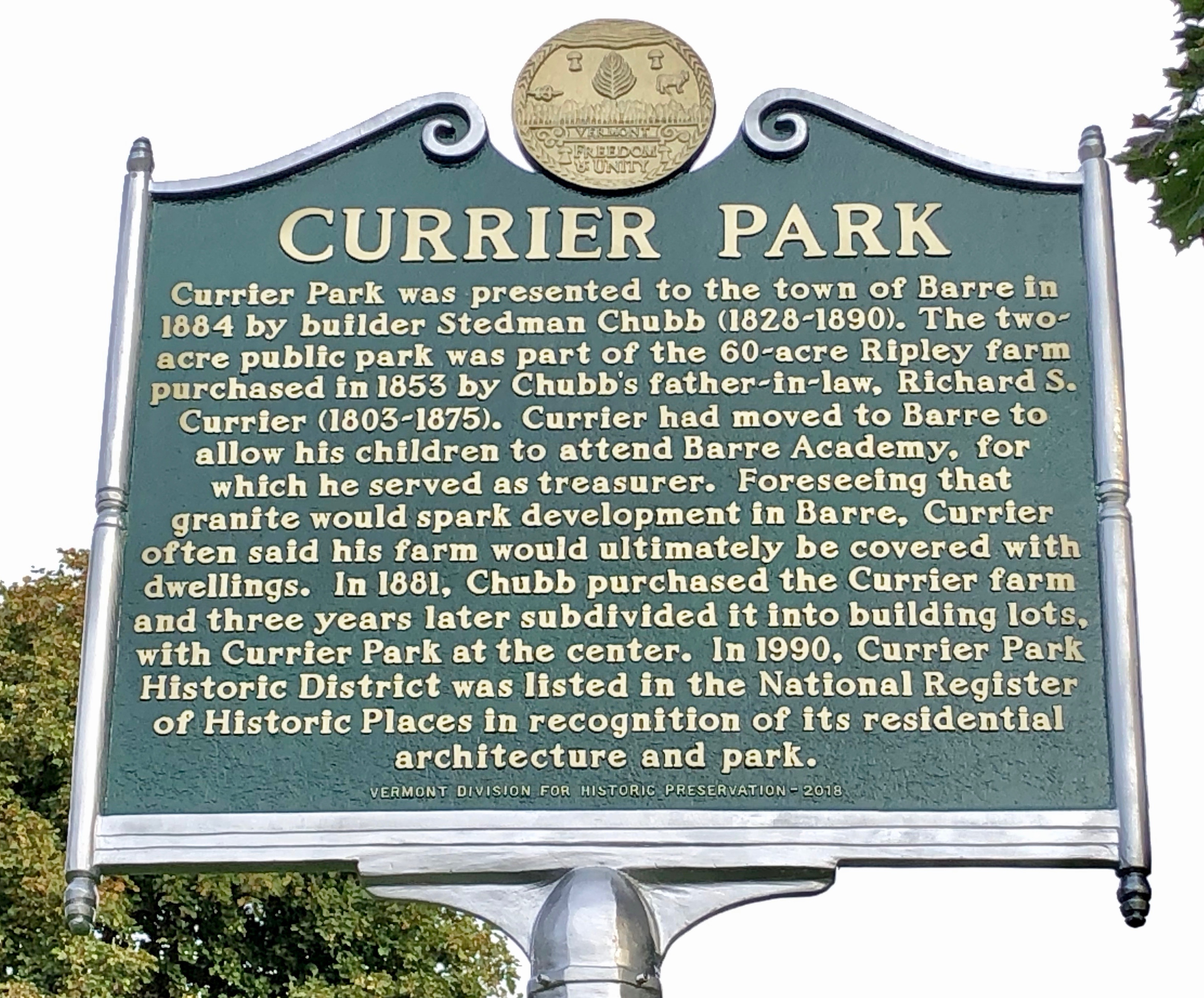Currier Park Historic District
The Currier Park Historic District, a well-preserved late 19th Century/early 20th Century development focused around Currier Park, illustrates the land development pressures and prosperity created by the thriving granite industry. Like most Vermont communities, the city was originally a farming community. Granite quarrying was conducted on a small scale in the early 1800's.
However, due to limited opportunities and desire to move west, Barre's population declined between 1840-1860 and increased only slightly from 1860-1870. With the introduction of the railroad to the granite quarries in the mid 1870's, the community's population grew by almost 5,000 persons between 1870-1890. Land on which the Currier Park Historic District sits was part of the last large farm located adjacent to the central business district. The large residences surrounding the Park were constructed for wealthy individuals who prospered from the economic growth.
Barre was first settled in 1788 by Samuel Rogers and John Goldsbury. Settlers came primarily from Massachusetts and Rhode Island. The town was chartered in 1793 under the name of "Wildersburgh", however later that year the name was changed to Barre. Barre remained primarily a farming community until the 1870's and 1880's when the granite quarrying industry started to boom. This boom created a demand for quarry workers and in turn this created a demand for more housing to be built on undeveloped land. Between 1881-1893 records indicate that an average of one house per week was constructed.
All but 5 buildings in the Historic District were constructed as single family residences, which would have been too expensive for a granite worker. Individuals who purchased homes within the Historic District were usually merchants whose businesses were thriving from the population and economic growth.
Richard S. Currier purchased the land, known then as the “Ripley Farm”, in 1853. It was the only large farm shown in the village Currier's residence fronted on Washington Road (Street). Currier was active in civic affairs and served as the treasurer of Barre Academy.
Stedman C. Chubb, who donated the land for Currier Park, was originally from Corinth, VT. In 1856, he married Caroline F. Currier, daughter of Richard S. Currier. Chubb was a mason and worked as a superintendent for E. & T. Fairbanks in St. Johnsbury, who re-built and enlarged the scale works, built the academy buildings, courthouse, Athenaeum and numerous other buildings in St. Johnsbury and Hanover, NH.
In 1880, Chubb moved to Barre and he worked briefly in the granite business. In 1881, Chubb purchased Currier’s farm and raised jersey cattle on the land he dubbed “Brookwood Stock Farm”. In 1883, Chubb donated 2 acres of the farm to the Town of Barre to be used as a public park for $1.00. Initially the Park was called Chubb Park, however, at the turn of the century it was known as Currier Park, which is how it is presently known. The deed states that the land is to remain as a public common for Barre residents and that no buildings or roads can be constructed on or through the land. It also states that the Town has the responsibility for landscaping and maintaining the grounds, but that if the Town fails in this effort individuals may do this work.
Since the majority of the Currier Park Historic District buildings were built over a relatively short time span (2 decades), they frequently share one or more architectural elements from a previous or incoming architectural style, resulting in a harmonious mixture of buildings surrounding Currier Park.


